Manuscript formatting
i.e. Generating in-text citations, footnotes and final bibliography in a wp document using references in the database
|
|
|
|
EndNote:
-
Windows version: CWYW cite-while-you-write® working with MS-Word 2003, 2007, 2010, [32/64 bit]; OO writer 3 (ODT format)
Mac version: CWYW working with MS-Word X 2004, 2008, 2011, Pages '09; also: other word processors supporting Mac Services offer limited CWYW capabilities; for other
wp see Identity card
-
Both versions also support:
SCAN: insert placeholders into the text of the wp document, scan it in RTF format (via e.g. Corel WordPerfect, StarOffice, Win Wordpad... etc.), produce a formatted copy of the original document
-
only CWYW has got: Searching citations, Instant formatting, Traveling library, Edit citations, Inserting notes, Inserting Figures from db records and
producing their full list.
CWYW is richer with options within MS-Word than in OOw
|
| EndNoteWeb: Windows MS WORD 2003/2007/2010 (32 bit); Mac MS WORD 2004/2008/2011; can format RTF files |
|
|
|
|
|
En: (the following only applies to MS-Word)
- CWYW can work with MS-Word 'Track changes' mode on
- Use MS-Word 'Remove codes' command to clean up formatted wp document and forward it to publisher, creates a copy of original document. N.B. it won't remove
also MS-Word's cross-references field coding
- Traveling library (CWYW) any user can work on a document, with formatted citations, prepared by another user, without having his db at hand. The MS-WORD document -via CWYW-
actually swallows the whole bibliographic record (apart from Custom fields, Notes and Abstract) and embeds it in the document; can export embedded records to an En db (or import from; record numbers change); 'traveling library'
function cannot be turned off
- Instant formatting (CWYW) can -optionally- instantly format record in the final style, before generating the document and the bibliography list (WYSIWYG-like): this option can be turned off
- Figures and Tables/charts (CWYW) It searches (by using all fields, including caption words) figures in db records and inserts in-text figures citations, e.g.: "(Figure 1)" [just the
picture: not the citation of the record containing it]: the formatted figure list, along with the graphic images, appears either at the end of the document, after the bibliography or attached to the citation's paragraph
- Document templates (CWYW) Can choose among some 185 shipped manuscript templates: i.e. MS-WORD style document .DOT with structured sections
- You can choose (within Bibliography | Format Bibliography) to hyperlink in-text citation to references in the final bibliography
- When CWYW is active it inhibits the use of the native bibliographic functions of MS-Word
|
| EW: install as third party software within MS WORD toolbar: CWYW functionality (can switch application: from EW and EndNote desktop) |
|
|
|
|
3 - Can format more than one wp document (e.g. chapters) at the time
|
| En: no (must first generate master document); but can put a separate partial bibliography at the end of each MS-Word Section and, optionally, a final complete bibliography |
| EW: no (as En desktop can do) |
4 - Can generate bibliography using records from more than one database at the time
|
| En: yes libraries must be open and CWYW will search and use references across them |
| EW: n.a. (only one db available while working with EW) |
5 - Ambiguous citations: different references bearing same author-same year :
1. program can distinguish them (e.g. 1990a 1990b, add other data ...)
2. program cannot distinguish them (therefore one has to differentiate them manually within the document text or in the database)
|
|
En: 1 yes, Ambiguous Citations in Style definition; 4 options:
- add first name or initials
- add more authors
- add title for same author
- suffix dates with "a", "b"...
|
| EW: just like En, according to the selected style |
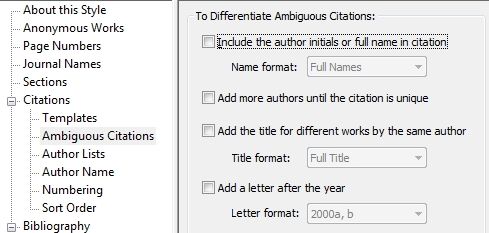 |
|
|
6 - Multiple citation (same or different authors)
1. can sort
2. can join numbering: i.e. 2-5
3. can omit names, year
4. can insert text
5. other: e.g. use one number for reference cited together
|
| En: 1 2 3 4 5 |
| EW: just like En, according to the selected style |
|
|
7 - Final in-text citation format is ruled by an ad hoc output style made up of more versions:
1 - in-text;
2 - first and subsequent ones;
3 - footnote;
4 - footnote: first and subsequent ones
|
|
En: 1, 3, 4: yes,
dedicated footnote format. It handles citations in footnotes repeated, not consecutively or adjacently, with options like:
- "short form" : a style in the footnotes template meant to be used for repeated -non consecutive- citations, can be different or equal to the full form or just shorter with the option to use the title only if useful to
disambiguate references (for the "Short form" see also Figure in Formatting language to design citation styles 1 - General Features);
for consecutive (adjacent) citations:
- insert text string and/or insert field(s) (Cited pages included), e.g.: Ibid. (or any other abbreviation)
- omit repeated data
- leave unchanged
- special provision for repeated same "Source" (e.g. a Conference Proceedings' title already cited) in consecutive different citations (also by different authors): can replace repeated data with a string, or it can
replace just the secondary title. It will not recognize and handle scattered different citations carrying the same source cited.
|
| EW: yes, just like En, according to the selected style |
|
example for repeated, adjacent, citations in footnotes (EndNote)
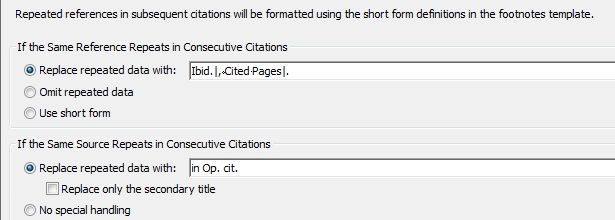
|
7.1 Footnotes citations: specifications for authors, also for subsequent citations
Authors List and Names
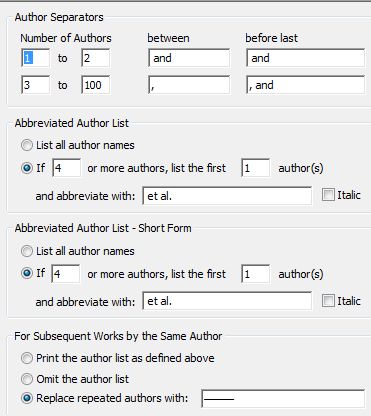 |
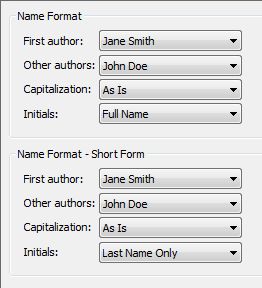 |
|
8 - In-text citation style can be different according to RT (i.e. there can be an in-text citation for books different from the one for videos)
|
| En: no, the in-text style is the same for all the different RT |
| EW: no: just like En |
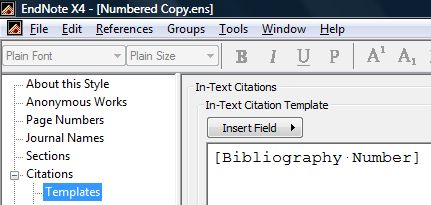 |
9 - Customize any single in-text/footnote citation's standard format:
1 - add text (in front of, after)
2 - pinpoint refs to page(s)
3 - hide/show portion -only the date, only the author's name, only a text note-
4 - hide completely in-text and put only in the bibliography list
|
| En: yes, all; 4: yes if style is: author and/or year: exclude both of them from citation |
| EW: yes, just like En, by using 'Edit Citations' facilities within MS-Word |
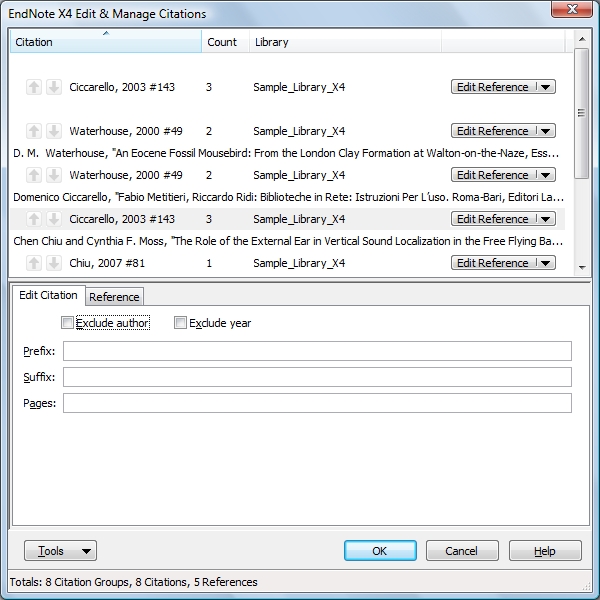 |
|
